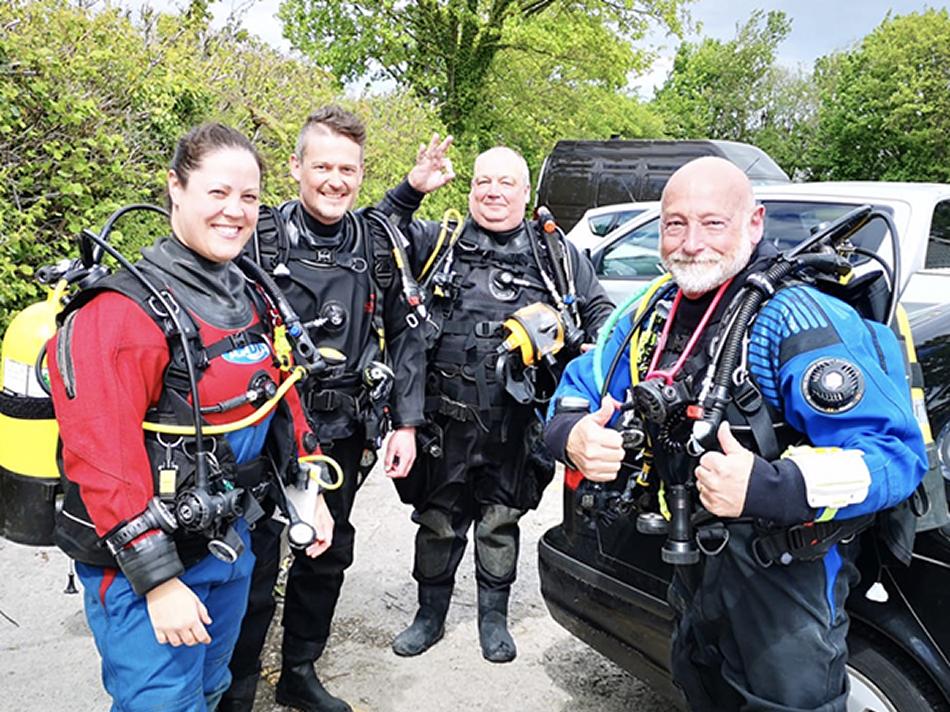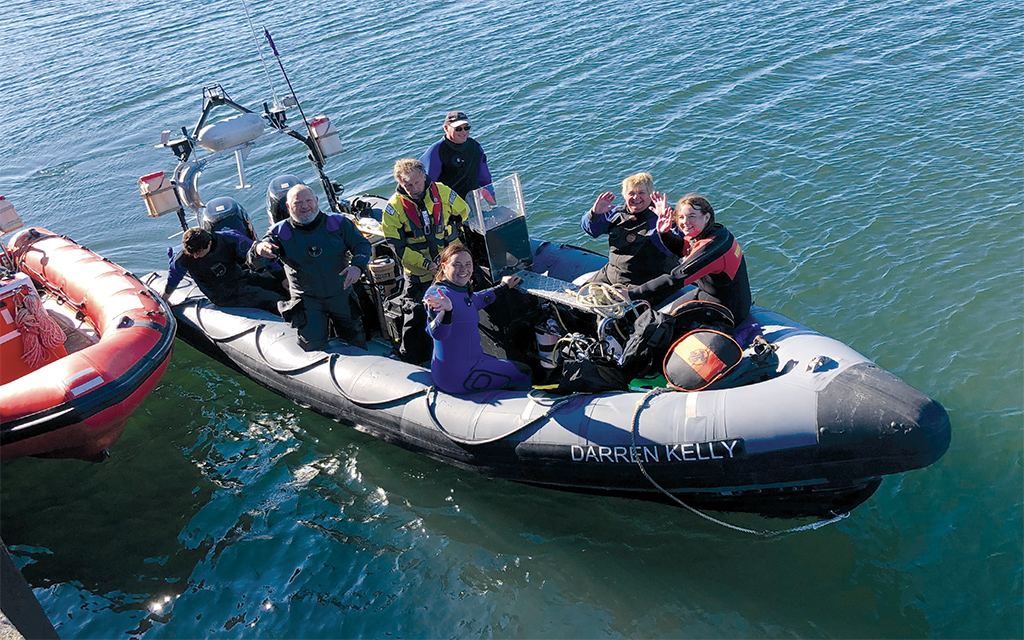
Tucked away in a quiet corner of Scotland is a super friendly dive club with a detailed archive of its local wrecks. Interview by Kristina Pedder.
Members of this active club, formed in a sparsely populated area of south-west Scotland in 1992, live far and wide, but not having weekly meetings doesn’t cramp Newton Stewart Sub Aqua Club’s style. Theirs is a tricky coastline to dive, with strong tides and currents, often making local shore diving difficult, but the club boats are well maintained and always ready to go diving. Over the years, members have carried out detailed research into local wrecks and built up a great wreck archive, now shared with you all on the club’s website.
Where in the UK are you?
Despite being called Newton Stewart Sub Aqua Club, most of our activities take place at the nearby Isle of Whithorn, Dumfries & Galloway in Scotland, where we have our two boats moored. It is a rural area and our members come from all over the region and from the north of England. It is difficult to meet up socially every week; our social secretary plans regular events, such as meals out, but most socialising takes place post-dive in the local pub.
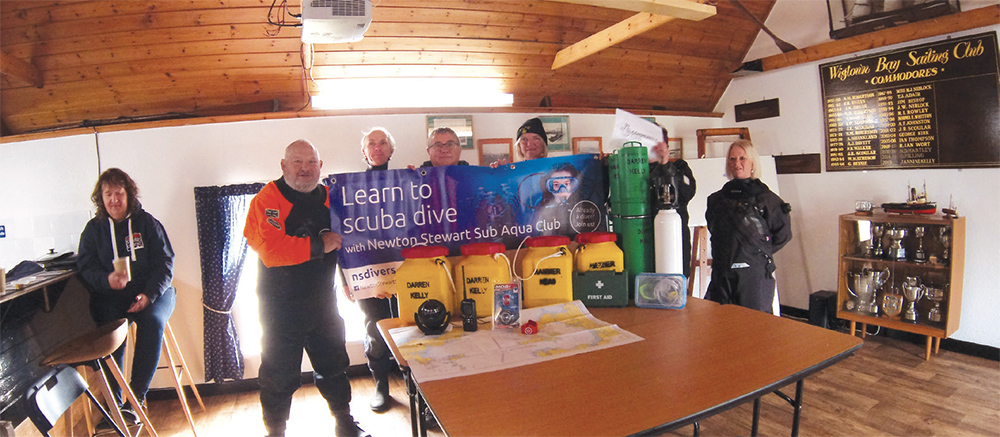
What is your club base like?
We have an agreement with the Wigtown Bay Sailing Club for the use of its club house, along with shower and toilet facilities, and somewhere to keep our compressors. Over the years we have built up a good relationship with local fishers and residents; we are now very much a recognised part of the community, recovering lost fishing gear and using our boats to help out at local events. Our free ‘trips to see the seals’ are always popular on fete days.
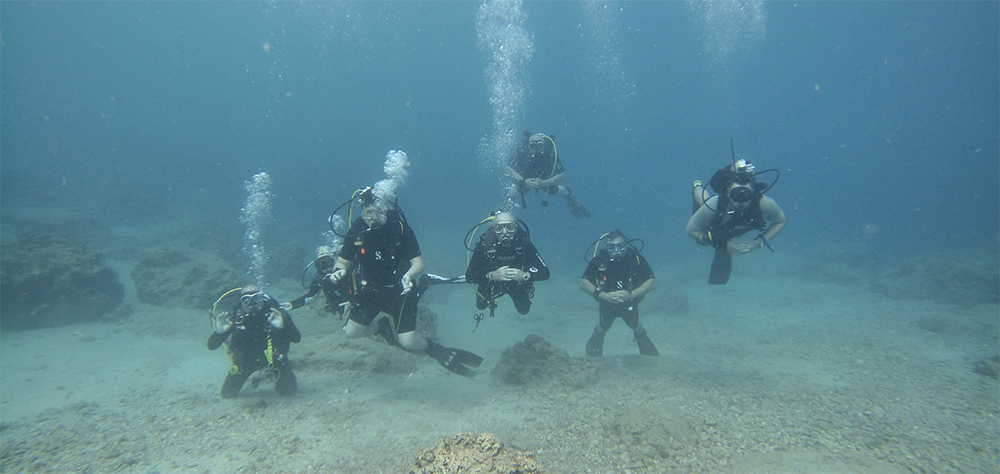
Who are your members?
We have around 50 members, around 60 per cent are over-50s so we are actively seeking younger members. They are: eight trainee Ocean Divers; seven Ocean Divers; 17 Sports Divers; 12 Dive Leaders, five of whom are nearly there with Advanced Diver; three Advanced Divers; a couple of snorkel members; and three honorary members.
Tell us about club life?
Lectures and events are hosted in the club room. The compressor and storeroom are harbour side. It is vital that we are self-sufficient in terms of air fills, as the nearest commercial fills are a four-hour round trip away in Glasgow. Because of this we run a large compressor and a smaller back-up. We have two Halmatic Arctic 21 RIBs, which can each take eight divers and a coxswain. We have some dive equipment that has been donated over the years. We can hire a pool in Newton Stewart, a half-hour drive away, but the cost means that we only book it for a set of four weekly two-hour sessions to train new students before the dive season.
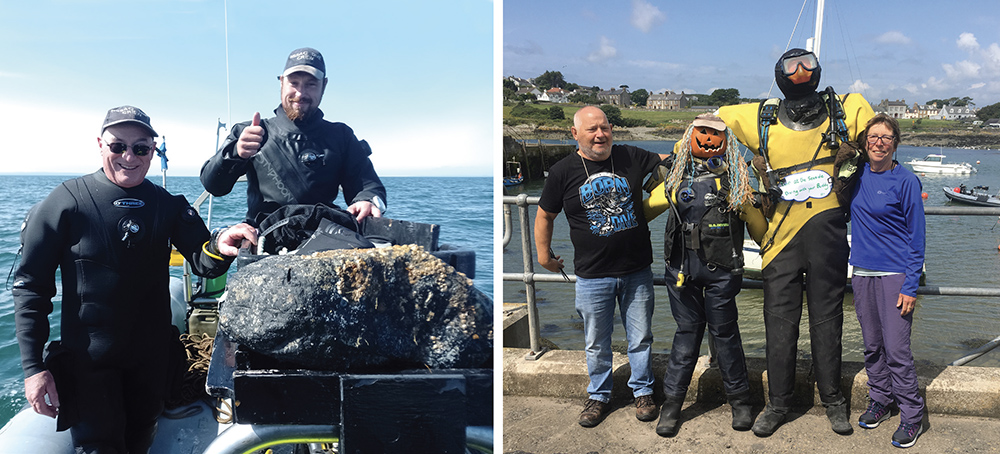
And the set up for going diving…
As the boats are kept moored in the harbour it’s easy to dive whenever the weather permits. We don’t have to worry about towing, launching and recovering. Fortunately, there are sheltered sites on both sides of the Machars peninsula, so we can get out whatever direction of the wind. We dive year-round and aim to get out every weekend and weekdays too if we can; many members are retired or can schedule their work. Despite unsettled weather conditions in 2023 and some boat refurbishment, the club still managed to achieve 420 dives, a little below our target of 500.
Many clubs find looking after boats difficult.
Yes it is, we fully refurbished our original 40-year-old RIB Hammerhead last year, and we purchased a new engine and trailer so that we can tow the boat around to more training sites. We are currently refurbishing a smaller tornado RIB that will be dedicated to exploratory diving. We also offer our services as a safety boat for local regattas.
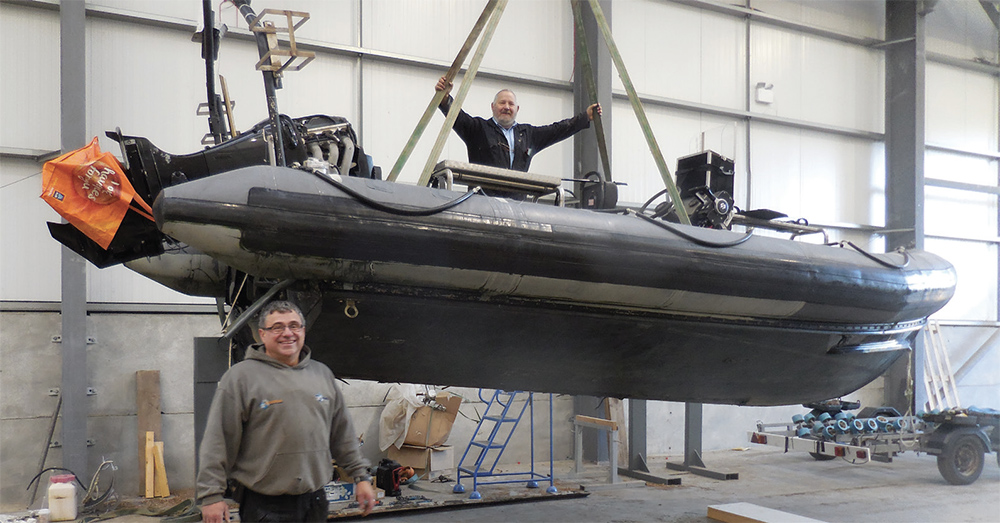
Boat repairs can be expensive, how does the club raise funds?
The main bulk of funding comes via grants for specific projects and we have been very successful, raising around £30,000 in the past year. We have received grants from local charities that support the community, including the Kilgallioch Community Fund, Holywood Trust and the Galloway Association, as well as smaller amounts from local community shops, the Solway Coast and Marine Project, the Wigtownshire Sports Council and individual donations. Due to the sparse population, fundraising opportunities at local events are limited.
What training is going on in the branch?
Our instructor team is six Open Water Instructors and three Assistant Open Water Instructors at present. Lacking an Advanced Instructor means we can only offer limited Advanced Diver training. The team aims to get trainees qualified as Sports Divers, so that they can easily participate in our diving activities. When we have sufficient interest, we run Dive Leader and Advanced Diver courses. The plan over the next few years is to become self-sufficient in terms of Diver Coxswain and to carry out more skill development and rescue training.
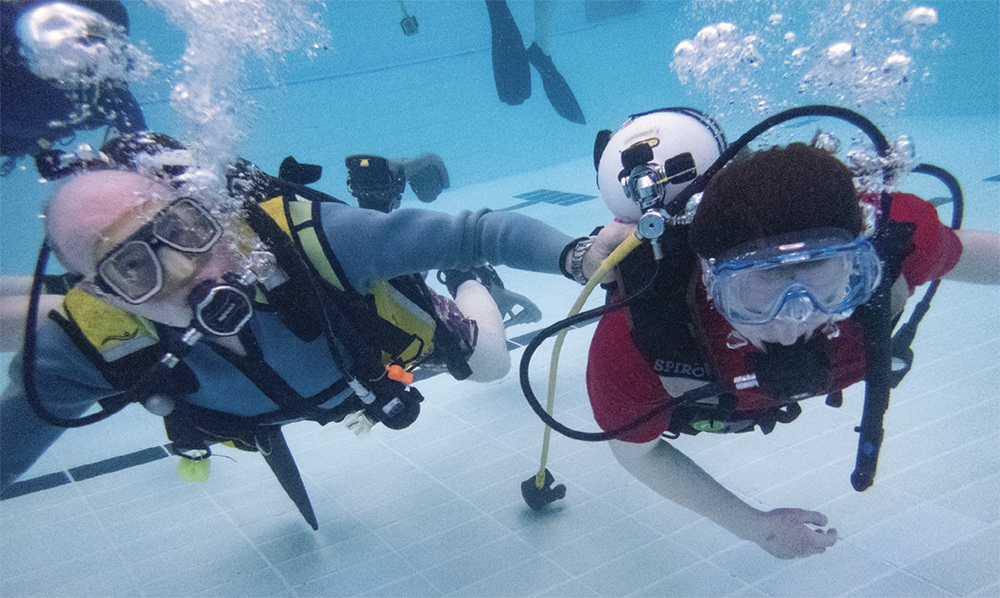
What dive trips are you planning?
This year, we will have one of our regular visits to Oban to dive the usual wrecks and the Garvellachs. We are also off to Northern Ireland to dive Rathlin Island, which we last visited more than 10 years ago. Both these longer trips are on charter boats to make the diving more relaxing, as we spend most of the time organising and running dives from our own boats. We also try to get away on at least one foreign trip a year. This is often to the Red Sea, but last year we went to Rhodes, where one of our members had dived before. Here we dived with Lepia Dive Centre, a very professional outfit. Given the scarcity of fish life, they made the diving surprisingly enjoyable. The wreck of the Giannoula K was a highlight and made the visit well worthwhile. In fact, the club is returning this October, which shows how much we enjoyed ourselves.
I don’t think many UK divers know much about your area. Tell us about your local dives.
The Wigtownshire coast is quite rocky with interesting underwater topography. Our best scenic sites are on the stretch of coast from Cairn Head, in Wigtown Bay, around Burrow Head to the south and then north into Luce Bay as far as St Ninian’s Cave. Here, where the craggy cliffs meet the sea, they form finger-like ridges of rock and reefs which stretch out down to a depth of 18 metres. At this depth the mixed ground shelves away to a silty seabed at a depth of 30 metres. The coast here is subject to strong tidal streams, which make for a dynamic environment particularly enjoyed by filter feeders of all kinds, from plumose anemones to scallops.
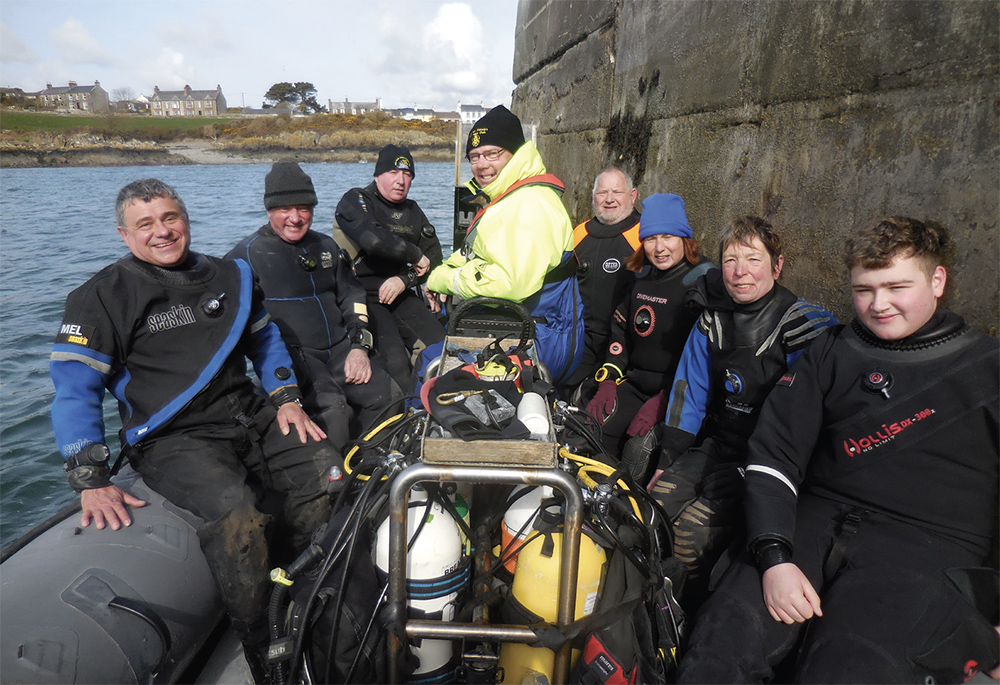
Are there good local shore dives?
Despite our coastal base, due to the nature of the coastline and strong tidal streams there is little possibility of shore diving in Luce Bay. For shore diving we would need to travel to Loch Ryan in Stranraer, so most of our diving is carried out from our two RIBs. At the beginning and end of the year we often do two-day dive trips to Capernwray to help with training and to get diving when the sea viz is poor.
Are there many local wrecks?
Near to the isle, we have a very sheltered wreck in shallow water that is now our training site. It also has a large underwater cave on the site which adds interest. Offshore, we dive 11 wrecks from 5m to 52m deep, some of which were discovered by the club. These have all been researched in detail and you can see the resulting 11 wreck tours with drawings and wreck histories on our website.
Has the club been involved in any other special projects?
We want to help support marine life. Ten years ago, we had a group of divers who were keen on Seasearch and we submitted reports for most of our coastal sites. A decade later, we plan to revisit these sites for an update. We will also be participating in a seagrass project in Loch Ryan as part of the Solway Coast and Marine Project (SCAMP), which is an ambitious 15-year project led by Dumfries and Galloway Council’s Environment Team and the Solway Firth Partnership. We hope to provide a database of photographs of our diving activities for use by the SCAMP project and others. We took the opportunity to promote the club in an article in the Solway Firth Partnership magazine, ‘Tidelines’. This enabled the club to showcase the local marine environment and created the initial contact with the Solway Firth Partnership.
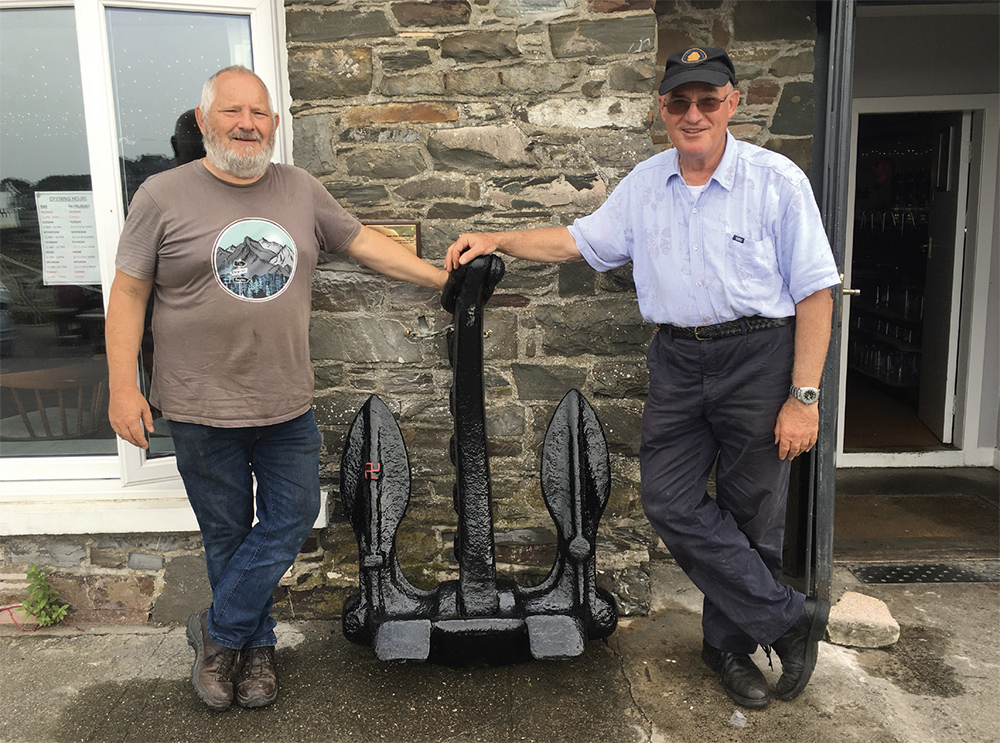
And for wreck divers?
We are also working on our local wreck resources; it’s time to draw new pictures of the wrecks and complete the videos we have of them. Happily, we have a number of new marks given to us by local fishers to explore; a number of known wrecks have not yet been found.
Last year, as part of our Advanced Diver training, we lifted, recovered and restored a large one-tonne anchor that had been revealed after winter storms. This is now displayed with an information plaque outside our local pub, the Steam Packet Inn.
The year ahead sounds action-packed.
With new marks to research, more club trips and training planned, developing the partnership with the SCAMP project, developing club skills and training more diver cox’ns, we will be busy. Several clubs have contacted us to check out diving with us and we are always ready to welcome visiting divers and show them our little-visited dive sites. We’re just hoping for better weather than last year.
Note: All items recovered in accordance with Receiver and MMO rules
How do I find scuba diving in southwest Scotland?
If you're looking to scuba dive in Scotland with Newton Stewart Sub Aqua Club, please contact Chris Harrison.
This Club Focus was originally published in SCUBA magazine, Issue 145 May 2024. For more membership benefits, visit bsac.com/benefits.




